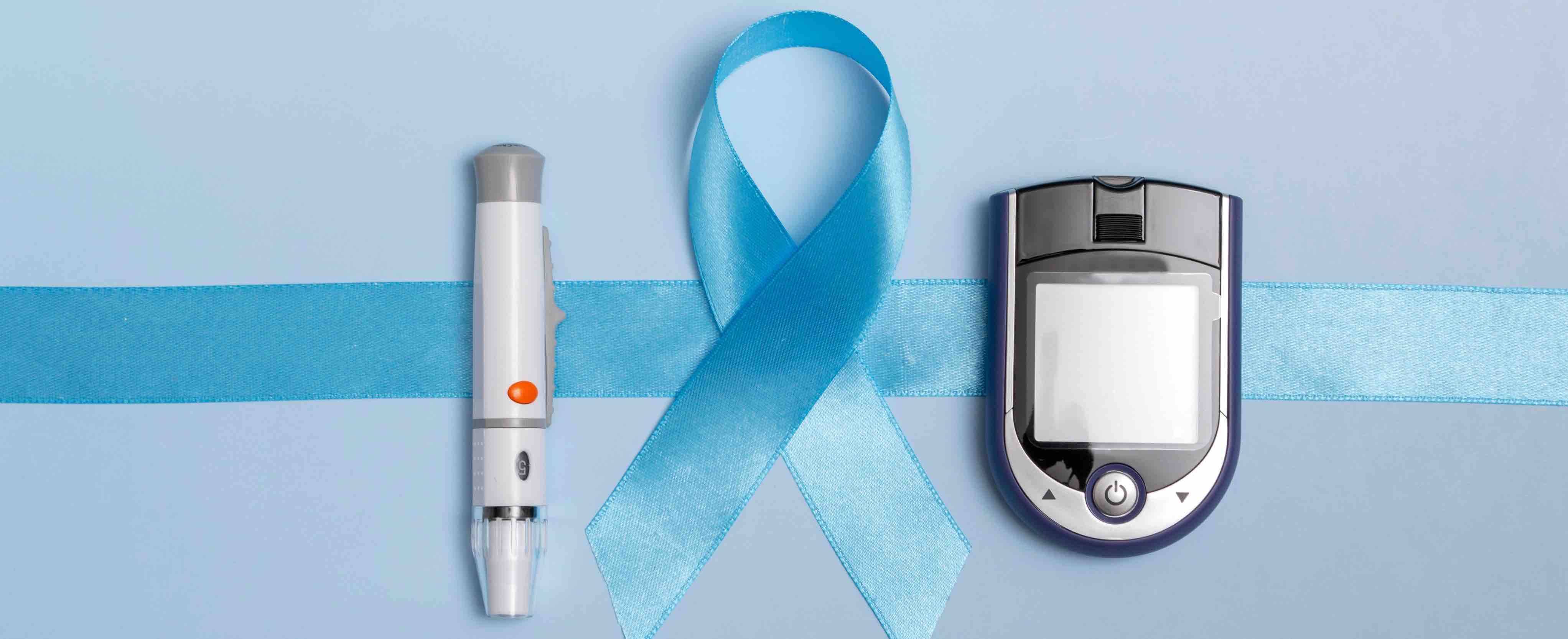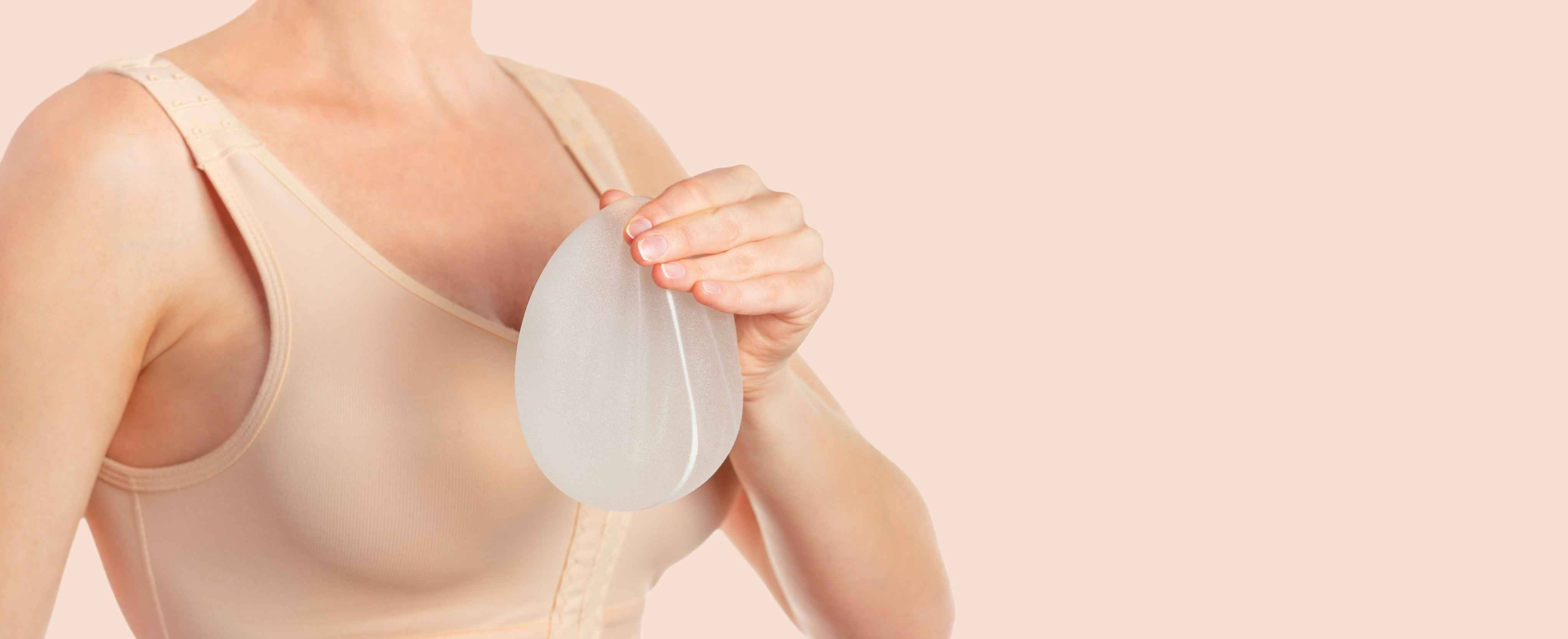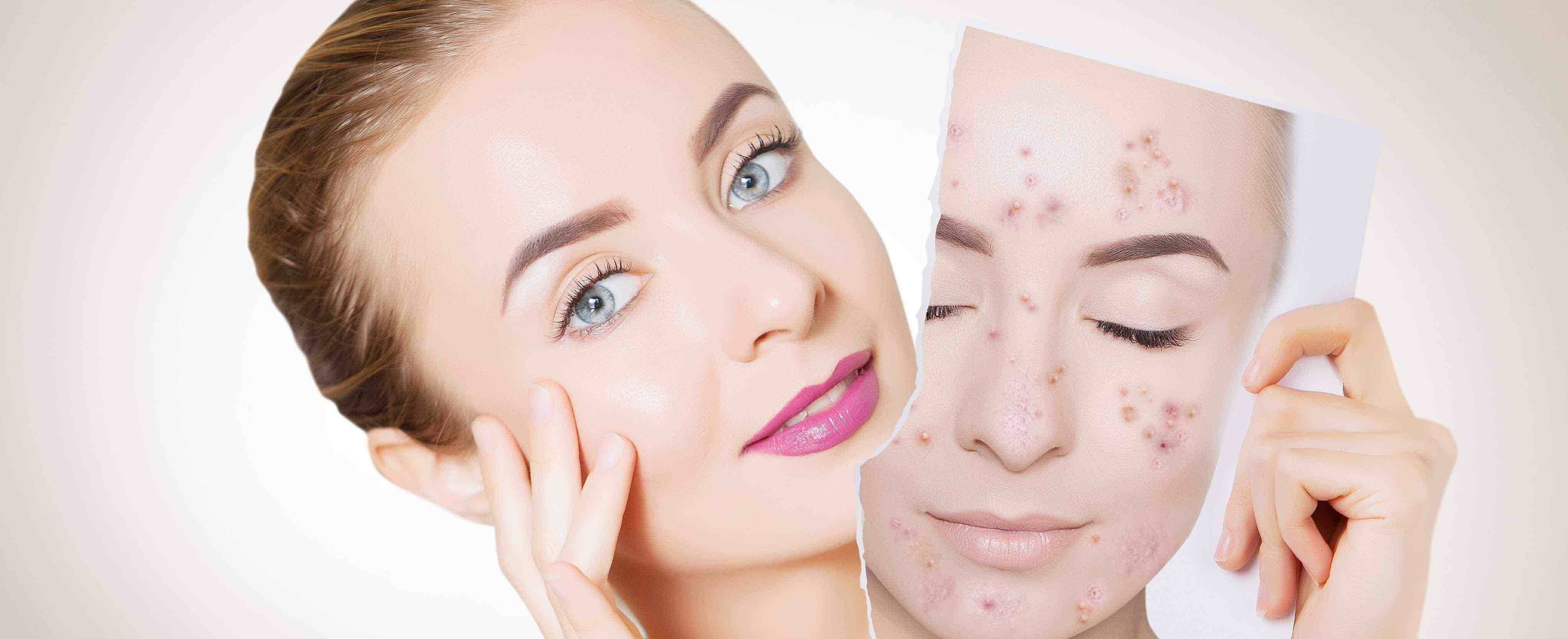Trambellir Articles

Travel Light, Travel Right: Must-Have Essentials for a Stress-Free Trip
A checklist on what to bring for your travels to feel burden-free By Fara Iezazzy | August 4th, 2025 It must be tiring to think about keeping too much stuff and bringing it all on your travels… We've all been there – staring at an open suitcase, trying to fit everything "just in case," only to end up lugging around a heavy bag full of things we never use. Travel is supposed to be freeing, not frustrating. That’s why learning to pack light – and smart – can transform your entire trip. In this guide, “Travel Light, Travel Right: Must-Have Essentials for a Stress-Free Trip,” we’ll help you cut through the clutter and focus on what truly matters, so you can enjoy the journey with less weight and more peace of mind. Versatile/Weather-Appropriate Clothing Pieces Pack smart by choosing clothing that suits the climate and can be mixed and matched easily. Stick to neutral tones, lightweight layers, and multi-use items – like a scarf that doubles as a blanket or a jacket that works for both day and night. Compact Toiletry Kit Travel-sized containers of your daily essentials are all you need. Opt for solid versions of shampoo, soap, or toothpaste to avoid spills. You can also pick up a set of mini refillable bottles to pack your favourite bath products. They’re TSA-friendly, space-saving, and let you bring exactly what you need – without relying on hotel toiletries. Power Bank & Universal Adapter Stay charged and connected wherever you are. A reliable power bank and an all-in-one adapter are lifesavers, especially during layovers or in remote areas. Reusable Water Bottle Keep hydrated without constantly buying plastic bottles. Many airports and cities now have refill stations, making this both an eco-friendly and cost-effective choice. In addition, carrying a reusable water bottle has become surprisingly trendy – it's not just practical, but also a stylish and eco-conscious statement. Digital Copies of Important Documents Scan or photograph your passport, tickets, and IDs and store them in a secure cloud folder or offline on your phone – just in case anything goes missing. Personal Medication & Basic First Aid Kit Always pack any prescription medications you need, along with a small first aid kit that includes pain relievers, band-aids, antiseptic wipes, and motion sickness tablets. It’s one of those things you hope you won’t need – but you’ll be glad you have it if anything comes up. Well, those are some of the essentials you really should bring to keep your trip stress-free and simple. And if you're thinking, “Hmm, what should I wear for the other days? I need different OOTDs, maybe something cute for photos…” – don’t worry! You can always shop for clothes at your destination. It’s a fun way to explore local styles, grab something unique, and maybe even score a few souvenirs you’ll actually wear. Plus, it saves space in your luggage on the way there! Travelling light doesn’t mean sacrificing comfort – it means choosing wisely so you can focus on the adventure, not the baggage. With these essentials in your bag, you’ll be ready for just about anything, without the stress of overpacking. So, skip the “just in case” clutter, keep it simple, and leave room for what really matters – new experiences, memories, and maybe even a few stylish finds along the way. Still wondering where to travel next for beauty treatments? Just click over to our website – we’ve got tons of destination recommendations to spark your wanderlust and help you plan the perfect getaway. Explore more, carry less—travel light and live fully. …
Read More
Unlocking the Secrets to Healthier, Fuller Hair
Simple lifestyle changes, nourishing foods, and smart hair care habits that promote volume, shine, and strength from root to tip. By Puteri Syafeeqa | August 1st, 2025 Full, shiny, and strong hair is a beauty ideal that many strive for, but achieving it often requires more than just a good shampoo. Hair health starts from the inside out, blending nutrition, proper care habits, and mindful styling. While genetics and hormones do play a role, much of the texture, volume, and vitality of hair depends on everyday choices. One of the most overlooked foundations of healthy hair is nutrition. Since hair is composed largely of protein (specifically keratin), a protein-rich diet is essential. Foods like eggs, fish, lean meat, and dairy products not only nourish the scalp but also stimulate hair growth. If protein intake drops too low, hair growth may slow and strands may become brittle. Beyond protein, zinc, iron, biotin, and vitamin D are also essential minerals and vitamins that contribute to a healthy scalp and robust follicles. Even mild deficiencies can lead to thinning or excessive shedding. Another powerful but often underestimated component is omega-3 fatty acids. These healthy fats, found in salmon, chia seeds, and walnuts, help to hydrate the scalp and add elasticity to hair strands, reducing breakage and supporting shine. While omega-3 will not transform thin hair into thick locks overnight, they create the ideal conditions for growth over time. In addition to what is consumed, how hair is treated daily makes a significant impact. Many unknowingly damage their hair through over-washing or using shampoos with harsh sulphates, which strip natural oils from the scalp. Instead, selecting a gentle, sulphate-free shampoo and washing according to hair type can help restore balance. Conditioning should never be skipped, especially for longer or chemically treated hair. It not only softens strands but helps prevent tangles and breakage. For long-term strength and fullness, it is important to treat hair gently especially when wet. Wet strands are more prone to stretching and breakage, so pat-drying with a towel, detangling with a wide-tooth comb, and avoiding aggressive brushing can reduce stress. Heat styling tools, while useful, should be used sparingly. Always apply a heat protectant spray and keep the temperature at the lowest effective setting to prevent dryness and split ends. Styling choices also affect long-term hair health. Tight ponytails, frequent coloring, and backcombing may offer temporary volume or style but can cause traction alopecia or permanent hair damage over time. Opting for loose hairstyles, air-drying, and chemical-free coloring methods whenever possible can preserve the integrity of the hair shaft. Let’s not forget the scalp, it is the environment where hair begins. Just like skin, the scalp needs regular cleansing, hydration, and circulation. Scalp massages, whether with fingers or a soft brush, can stimulate blood flow and support nutrient delivery to hair follicles. Scalp exfoliation once a week can help clear buildup from sweat, products, and pollution, especially for those living in urban areas. External care matters, but so do lifestyle habits. Stress, poor sleep, and crash dieting are well-known triggers of hair thinning. High cortisol levels and rapid weight loss can push hair into a shedding phase. Managing stress through techniques like meditation, consistent sleep routines, and regular physical activity can indirectly but powerfully influence hair growth. Lastly, remember that consistency is key. There are no instant fixes for fuller, healthier hair. Whether it is a dietary change, a switch in shampoo, or limiting heat styling, visible improvements usually take 2 to 3 months. Being patient and staying committed to a routine pays off in the form of thicker, shinier, more resilient hair. …
Read More
A Simple Guide to Breast Cancer Treatment
Early and accurate treatment could save lives By Puteri Syafeeqa | July 28th, 2025 Breast cancer is one of the most common cancers affecting women worldwide. It happens when cells in the breast grow uncontrollably and form a tumour. The good news is that with advances in medical science, many breast cancers can be treated effectively, especially when detected early. Main Types of Breast Cancer Treatment 1. Surgery Surgery is often the first step to remove the cancer from the breast. There are two main types: Lumpectomy (Breast-Conserving Surgery): Only the tumour and a small margin of healthy tissue around it are removed. The rest of the breast remains. This is often followed by radiation therapy. Mastectomy: Removal of the entire breast. Sometimes nearby lymph nodes under the arm are removed too. This may be recommended if the tumour is large or if there are multiple areas of cancer. Modern surgical techniques aim to remove the cancer while preserving as much normal breast tissue and appearance as possible. 2. Radiation Therapy Radiation therapy uses high-energy rays to kill cancer cells left behind after surgery. It is most commonly used after lumpectomy to reduce the risk of cancer returning in the breast. Sometimes, radiation is used after mastectomy if there is a higher chance of recurrence. Radiation sessions are usually done daily for about 3 to 6 weeks. The treatment is painless, but some patients may experience skin redness or fatigue. 3. Chemotherapy Chemotherapy involves medicines that travel through the bloodstream to kill cancer cells throughout the body. It can be given before surgery to shrink the tumour and make surgery easier and after surgery to kill any remaining cancer cells and lower the risk of recurrence. 4. Hormone Therapy Some breast cancers need hormones like estrogen or progesterone to grow. Hormone therapy blocks these hormones or lowers their levels in the body to slow or stop cancer growth. It is usually given as pills or injections for several years after surgery or chemotherapy. Hormone therapy can cause side effects such as hot flashes, joint pain, or bone thinning, but it is often very effective for hormone receptor-positive breast cancers. What to Expect During Treatment Regular Visits: You will have frequent checkups with the doctor to monitor your response and manage side effects. Side Effects: Each treatment has different side effects, but doctors work hard to reduce discomfort and maintain your quality of life. Emotional Support: Breast cancer treatment can be emotionally challenging. Support groups, counselling, and loved ones can help you through this time. Tips for Patients During Treatment · Follow your doctor’s instructions carefully and attend all appointments · Eat a balanced diet and stay hydrated to support healing. · Rest when you feel tired but stay lightly active, if possible, to improve strength and mood. · Speak openly with your healthcare team about any symptoms or concerns. · Lean on friends, family, or support groups for emotional care. The Importance of Early Detection The best chance for successful treatment is early diagnosis. Regular breast self-exams, mammograms, and checkups help find cancer before it spreads. If you notice changes in your breasts like lumps, pain, or skin changes see a doctor right away. Conclusion Breast cancer treatment today offers many effective options, and most patients live full, healthy lives after treatment. The right plan depends on your unique case, and your doctor will guide you every step of the way. …
Read More
Wellness Retreats In Asia: Where To Go And Why
A journey to inner peace starts with the right destination By Fara Iezazzy | July 14th, 2025 Ever dreamed of traveling while truly treating yourself – not just to sightseeing, but to deep healing, relaxation, and a reset for your mind and body? If you’ve been feeling burnt out, overwhelmed, or just disconnected from yourself, it might be time to stop and ask: when was the last time you gave yourself real “me time”? Asia, with its rich traditions in wellness, ancient healing, and natural beauty, offers some of the world’s most rejuvenating retreats. Whether you’re craving quiet meditation in the mountains, a full-body detox by the sea, or a spa experience surrounded by lush tropical forests – there are places here for you to recharge, reflect, and reawaken. So, if you're ready to trade stress for serenity, here are the top wellness retreat destinations in Asia – and why they’re worth the journey. Where To Go? 1. Thailand Thailand is a wellness haven, offering everything from ancient Thai massages to beachside detox retreats. In Chiang Mai, you'll find tranquil mountain retreats specializing in yoga, herbal healing, and meditation. Down south in Phuket and Koh Samui, luxurious resorts focus on sound therapy, raw food detox, and spa treatments, all set against postcard-perfect beaches. 2. Indonesia (Bali) Bali combines spirituality and tropical serenity like nowhere else. Ubud is the heart of the island’s wellness scene, known for yoga, breathwork, and spiritual healing set among rice fields and jungle. You’ll also find emotional cleansing ceremonies, plant-based meals, and traditional Balinese rituals that make inner transformation feel natural. 3. Japan Japan offers a refined approach to wellness rooted in simplicity and nature. In places like Kusatsu and Hakone, centuries-old onsen (hot spring) towns offer mineral-rich soaking experiences for deep physical relaxation. In Kyoto, Zen retreats focus on mindfulness through tea ceremonies, forest walks, and silent meditation to help reset a cluttered mind. 4. South Korea South Korea is emerging as a modern wellness destination that fuses high-tech treatments with traditional healing. On Jeju Island, nature takes the lead with forest bathing, volcanic spring spas, and slow-paced wellness resorts. In Seoul, clinics offer stress recovery, beauty therapies, and customized holistic care with a cutting-edge edge. 5. Vietnam Vietnam's wellness offerings are affordable, scenic, and culturally rich. Coastal cities like Da Nang and Hoi An feature luxury wellness resorts that combine beachside yoga, traditional massage, and herbal therapies. The emphasis on balance, local healing herbs, and Vietnamese Buddhist mindfulness make it a peaceful escape for mind and body. After reading through these incredible destinations, you might be asking yourself: Why should I go? The answer is simple – because you deserve to. Whether you're feeling burnt out, overwhelmed, or just in need of a quiet pause from your fast-paced life, a wellness retreat offers more than just a getaway. It’s an intentional break – a reset for your body, mind, and soul. And why choose Asia? Because Asia isn’t just beautiful – it’s deeply rooted in healing traditions. From ancient herbal medicine in Bali to time-honored meditation practices in Thailand, the region offers a powerful blend of nature, culture, and spiritual wisdom. Each destination isn’t just a place to relax, but a place to reconnect – with yourself and with the world around you. So, whether you’re craving ocean breezes, peaceful mountain air, or temple-side serenity, there’s a perfect spot in Asia waiting for you to arrive and simply breathe. Now you know where to go – and why these places in Asia are worth the journey. So, pack your bags and give yourself what you truly deserve: time, space, and care, just for you. This isn’t just about travel – it's about tuning in, slowing down, and choosing yourself for once. Let your retreat be more than a break; let it be a beautiful beginning. Ready to take the next step? Click to explore and book the retreat that speaks to you. …
Read More
Why Hydro Jelly Mask Is The Ultimate Skin Treat
Discover how this cooling, jelly-like mask deeply hydrates, soothes, and brightens every skin type By Puteri Syafeeqa | July 11th, 2025 In the world of modern skincare, new treatments are always appearing, offering promises of smoother, brighter, and healthier skin. Among these options, one standout treatment that has been gaining attention for its refreshing feel and impressive results are the Hydro Jelly Mask. With its soft, jelly-like texture and skin-boosting benefits, this mask is more than just a spa luxury. It delivers real hydration, soothes the skin, and leaves a glowing finish that can be seen after just one session. Hydro Jelly Mask is especially helpful as the final step in many skincare treatments. They are gentle, non-invasive, and suitable for a wide range of skin types. Whether used after a facial, waxing, or exfoliation treatment, this cooling mask helps calm the skin and lock in nutrients, making it a favourite among skincare professionals as well as customers. What Is a Hydro Jelly Mask? Hydro Jelly Mask is a thick, jelly-like mask made from natural ingredients such as refined algae. It is designed to deeply hydrate the skin, soothe irritation, and support a smooth, balanced complexion. Unlike ordinary face masks, this one solidifies into a rubbery texture, creating a soft vacuum-like seal over the skin. This seal helps deliver nutrients and hydration more effectively than traditional creams or lotions. The mask is rich in electrolytes, hyaluronic acid, collagen, and plant extracts. These ingredients are selected to support skin health in multiple ways. They help the skin hold moisture, reduce redness, improve elasticity, and restore glow. Each formula is carefully designed to meet specific skin needs, some focus on brightening, while others aim to calm breakouts or fight signs of aging. Hydro Jelly Mask is available in several varieties, allowing skincare professionals to choose the best match for each skin type and concern. With continued use, skin appears fresher, smoother, and more radiant. How Does Hydro Jelly Mask Work? Hydro Jelly Mask is mixed fresh just before use by combining a fine powder with water to create a thick jelly. This mixture is then applied directly to the skin in a thick layer. As the mask rests on the face, it begins to cool and firm up slightly. Over 15 to 20 minutes, the jelly forms a seal that holds in moisture and gently pushes nutrients deeper into the skin’s layers. When the time is up, the mask peels off easily in one piece, leaving no sticky residue behind. Skin is left feeling cool, calm, and refreshed, with a noticeable glow and smoother texture. What Are the Benefits of Hydro Jelly Mask? Hydro Jelly Mask delivers a variety of skin benefits, making it a versatile choice for different skin types and concerns. One of the standout qualities is the instant soothing and hydrating effect it provides. After just one application, the skin often feels noticeably softer, looks more radiant, and appears more balanced in tone and texture. The mask is designed to deliver deep moisture, which is especially helpful for dry or flaky skin, while also calming irritation and reducing visible redness. Beyond hydration, Hydro Jelly Mask offers several other skin-enhancing effects. They help smooth the skin’s surface and can reduce the appearance of large pores, creating a more refined look. By supporting the skin’s natural barrier, they also improve moisture retention over time. Some formulations provide gentle detoxifying action, leaving the skin clearer and fresher-looking, while others offer a mild exfoliating effect to promote natural cell turnover. Their cooling, refreshing feel makes them ideal after treatments like waxing or exfoliation. Suitable for use on the face as well as the neck, chest, back, and even the buttocks, Hydro Jelly Mask is a flexible addition to both facial and full-body skincare routines. What Makes the Formula Special? Hydro Jelly Mask is made with a special blend of ingredients that are gentle on the skin while providing multiple skincare benefits. The main base of this mask is refined algae, a natural ingredient known for its powerful soothing and moisturizing effects. Along with algae, the mask is enriched with electrolytes like potassium, magnesium, sodium, and phosphorus. These minerals play an important role in helping the skin absorb and lock in moisture, which is essential for achieving a soft texture and a healthy, radiant glow. In addition to these core components, many Hydro Jelly Mask formulas are boosted with active ingredients that target specific skin concerns. Hyaluronic acid delivers deep hydration, helping to plump up the skin. Collagen supports skin elasticity and firmness. Charcoal works to detoxify and deeply cleanse clogged pores. Alpha arbutin helps fade dark spots and brighten uneven skin tone, while rose extract provides a calming and softening effect. Some formulas also include fruit enzymes, which gently exfoliate dead skin cells, revealing fresher and smoother skin underneath. Conclusion Hydro Jelly Mask offers a refreshing, calming, and deeply nourishing experience that supports healthy skin from the outside in. With their jelly-like texture, skin-friendly ingredients, and gentle delivery, Hydro Jelly Mask is more than just a trend. They are a valuable tool in achieving smoother, softer, and more hydrated skin. Whether used alone or as part of a complete skincare treatment, a Hydro Jelly Mask leaves skin feeling cool, comforted, and glowing. With a wide range of formulas and the ability to customize each experience, this jelly-based mask is a smart choice for anyone who wants to give their skin a little extra care and attention. Click here to explore the options available for Hydro Jelly Mask …
Read More
Type 2 Diabetes Drug List You’ll Be Glad You Saved
Things about type-2 diabetes that could help to support healthier lifestyle By Fara Iezazzy | July 7th, 2025 If you have been watching your sugar intake, exercising regularly, and still are not seeing the results you hoped for – hey, you are not alone. Managing Type 2 diabetes often takes more than just lifestyle changes. That is where medications can help. Here are some of the most popular and effective Type 2 diabetes drugs that may support your journey to better blood sugar control. Popular Type 2 Diabetes Medications 1. Metformin Usually the first-line medication for Type 2 diabetes. It works by lowering glucose production in the liver and improving your body sensitivity to insulin. Effective, affordable, and has a long safety record. 2. GLP-1 Receptor Agonists Mimic the GLP-1 hormone which helps lower blood sugar by increasing insulin release, slowing digestion, and reducing appetite. Great for blood sugar control and often aids in weight loss. Rybelsus is the first oral GLP-1 medication, offering a non-injection option. Examples: Saxenda, Trulicity, Ozempic, Rybelsus 3. SGLT2 Inhibitors Help your kidneys remove excess glucose through urine. Lower blood sugar and have heart and kidney benefits. Examples: Jardiance, Farxiga, Invokana Well, now you know some of the top medications commonly used to manage Type 2 diabetes – which not only help control blood sugar but also support weight loss. Options like GLP-1 receptor agonists are especially known for their dual benefit of regulating glucose and reducing appetite, making them popular choices for those looking to manage both diabetes and body weight. To get the most out of these medications, pairing them with a healthy lifestyle is key. When combined with regular physical activity and nutritious eating, the benefits can go beyond glucose control. Here are some advantages you may experience with this combined approach. Advantages of Combining Meds with Healthy Lifestyle Improves blood sugar regulation: Helps maintain stable glucose levels, reducing highs and lows. Enhances weight loss results: Supports fat reduction and appetite control for better slimming outcomes. Increases energy and stamina: More balanced blood sugar can lead to feeling more energetic throughout the day. Reduces risk of diabetes complications: Better control lowers chances of nerve, kidney, and eye problems. Better cardiovascular health: Weight loss and blood sugar control help protect your heart and blood vessels. Greater long-term treatment effectiveness: Combining medications with lifestyle changes improves overall success and health sustainability. Of course, medications can provide significant help in managing Type 2 diabetes, but their effectiveness is greatly enhanced when paired with a consistent, healthy lifestyle. This includes regular exercise like walking or cycling, balanced meals rich in vegetables and lean proteins, and reducing processed sugars. But remember, always consult with the doctor to get a personalized treatment plan tailored to your specific needs and health conditions, and to ensure that those medications you picked, are the right treatments for you. In conclusion, while these medications offer great support for managing diabetes and weight, combining them with healthy habits is the key to long-term success. Some of the medications mentioned are also available on our website – feel free to explore your options and book with us to start your journey towards better health. …
Read More
The Comprehensive Benefits Of Breast Augmentation
Why ladies shall consider it as a great investment By Puteri Syafeeqa | July 4th, 2025 Breast augmentation is a surgical procedure that enhances the size, shape, and overall appearance of the breasts using implants or fat transfer. While often associated with aesthetic goals, the benefits of this procedure go far beyond physical appearance. For many individuals, it brings emotional, psychological, and even practical improvements to their daily lives. Enhanced Physical Appearance 1. Increased Breast Volume One of the most common reasons individuals pursue breast augmentation is to increase the volume and fullness of their breasts. Whether due to genetics, aging, weight loss, or post-pregnancy changes, some people may feel that their natural breast size does not match their desired body proportions. Augmentation can help create a more balanced figure and restore youthful contours. 2. Improved Symmetry Breast asymmetry is very common, but when the difference is noticeable, it can affect self-image. Implants can be used to even out the size and shape of the breasts, helping to achieve a more harmonious and proportionate appearance. 3. Restored Shape After Bodily Changes Pregnancy, breastfeeding, significant weight loss, and aging can all impact breast shape and firmness. Breast augmentation can restore volume and correct sagging, especially when combined with a breast lift, leading to a firmer and more youthful look. Psychological and Emotional Well-Being 1. Enhanced Self-Confidence One of the most frequently reported benefits of breast augmentation is the boost in self-confidence and body image. Individuals often feel more comfortable and confident in their clothing, swimwear, and intimate settings after the surgery. 2. Improved Quality of Life Feeling good about one’s appearance can lead to increased social engagement, better posture, and a more positive mindset. These changes can affect many areas of life, including relationships, career, and personal development. 3. Empowerment and Self-Expression For some women, breast augmentation is about personal empowerment. Making the choice to change one’s body on their own terms can be a deeply affirming experience that reflects individual autonomy and self-care. Reconstructive and Corrective Applications 1. Correction of Developmental Issues Some individuals may have conditions that affect breast development, such as tuberous breasts or asymmetry caused by medical or genetic factors. Breast augmentation can correct these issues, leading to improved physical balance and psychological comfort. Technological Advancements and Personalization 1. Variety of Implant Options Modern breast augmentation offers a range of implant materials, shapes, and sizes, allowing the procedure to be tailored to each individual’s body type and goals. Whether someone prefers a natural look or more pronounced volume, today’s technology offers flexible solutions. 2. Enhanced Safety Advances in surgical techniques and implant design have significantly improved the safety and longevity of breast augmentation procedures. Minimally invasive techniques reduce scarring and recovery time, while newer implant materials are more durable and natural-feeling. 3. Long-Term Results With proper care, implants can last many years. Regular check-ups and monitoring ensure that any potential complications are addressed early, making breast augmentation a long-term investment in self-image and well-being. Conclusion Breast augmentation is more than a cosmetic enhancement, it is a personal journey that can positively impact physical appearance, emotional health, and overall quality of life. With modern techniques and customizable options, individuals have more control than ever in shaping their desired body image. When approached with realistic expectations and expert guidance, this procedure can be a powerful step toward greater confidence and self-assurance. Explore breast augmentation options available at our affiliated clinics and hospitals here …
Read More
What Your Gut Says About Your Mood
Feeling moody? Might be your gut demanding better health By Fara Iezazzy | June 30th, 2025 Ever had a “gut feeling” or butterflies in your stomach before something big? Turns out, it’s not just a metaphor – your digestive system and brain are in constant communication. The gut-brain axis is one of the most fascinating discoveries in modern health science, and it could be the missing piece in your emotional wellness puzzle. That’s why when your stomach’s off, your whole mood can go sideways – ever notice how bloated mornings can lead to cranky afternoons? Or how stress can send you running to the bathroom? Yep, it’s all connected. Your gut actually plays a big role in how you feel emotionally, from the moment you wake up to how you wind down at night. So, what’s really going on down there – and how can you keep your belly (and brain) feeling their best? Let’s break it down. What is the Gut-Brain Connection? · Your gut and brain are deeply connected. This relationship is called the gut-brain axis – a two-way communication system linking your digestive system and central nervous system. · Your gut produces important mood-related chemicals. Around 90% of serotonin, often called the “happy hormone,” is made in the gut. When your gut is balanced, your mood is more likely to feel stable and calm. · A healthy gut can support emotional well-being. Proper digestion, balanced microbiota (gut bacteria), and good nutrition all play a role in promoting mental clarity, energy, and emotional resilience. · When the gut is imbalanced, it may affect how you feel. Poor digestion, inflammation, or an unhealthy diet can disrupt this connection – sometimes leading to mood swings, anxiety, or fatigue. A balanced gut doesn’t just support digestion – it can influence how you feel, think, and respond to daily stress. By making thoughtful choices around food, lifestyle, and overall wellness, you’re not only caring for your body but also creating a more stable and positive emotional state. So, how exactly can you support your gut and, in turn, your mood? Here are some practical ways to start nurturing this powerful connection. · Eat more fiber-rich foods Whole grains, fruits, vegetables, and legumes feed the good bacteria in your gut, helping maintain a healthy balance and promoting smoother digestion. · Include fermented foods in your diet Foods like yogurt, kimchi, miso, and kefir contain natural probiotics that introduce beneficial bacteria to your digestive system. · Stay hydrated throughout the day Drinking enough water supports digestion and helps your gut move waste and toxins more efficiently. · Limit processed foods and added sugars Highly processed foods can disrupt your gut flora and contribute to inflammation, which may affect both digestion and mood. · Manage stress through movement and mindfulness Chronic stress can negatively affect gut health. Activities like walking, yoga, meditation, or even deep breathing can help calm both your mind and your digestive system. · Prioritize regular sleep Your gut has its own rhythm, and irregular sleep can throw it off. Aim for 7 to 9 hours of consistent, quality sleep each night to support overall balance. · Consider probiotics or prebiotics (with guidance) Supplements can support gut health, especially during or after illness or antibiotic use. However, it’s best to consult a healthcare provider before starting anything new. Now you know – your gut does more than just digest food. It plays a key role in how you feel, think, and manage stress each day. By making mindful choices to support your digestive health, you're also creating space for more balance, clarity, and emotional ease. Nourish your gut, and your mood will follow – because feeling good starts from within. Plan your gut health check-up with our affiliated clinics here …
Read More
Why You Shouldn’t Skip That Liver Checkup
Health matters, this includes your liver By Fara Iezazzy | June 27th, 2025 Most of us go about our daily lives without thinking twice about our liver. It's not something you see, feel, or often hear about – until something goes wrong. The truth is, your liver could be silently struggling long before any symptoms show up. And by the time you do feel something, it might already be too late for easy fixes. With the rising number of lifestyle-related liver issues like fatty liver disease, even healthy-looking individuals can be at risk. That is why a routine liver checkup – including non-invasive tools like FibroScan and ultrasound – can make all the difference. It's not about fear; it’s about taking quiet, smart action before problems escalate. Who Should Get It? · People with Risk Factors - If you have a family history of liver disease or conditions like diabetes, obesity, high cholesterol, or hypertension, you're at a higher risk for liver problems. · Heavy Drinkers or Those with a History of Alcohol Use - Chronic alcohol consumption can lead to fatty liver disease and cirrhosis, making regular liver screenings essential. · Individuals on Long-Term Medications - Certain medications, such as statins or those for chronic conditions, can affect liver function over time, making checkups crucial. · Those with an Unhealthy Diet or Lack of Exercise - A diet high in fats, sugars, or processed foods, combined with a sedentary lifestyle, can increase the risk of fatty liver disease. · People Experiencing Unexplained Symptoms - Persistent fatigue, abdominal discomfort, bloating, or unexplained weight gain can be early signs of liver issues. · Those Concerned About Preventive Health - Even if you feel healthy, a liver checkup can serve as a proactive health measure to monitor your liver function and catch potential problems early. · Individuals Over 40 - As you age, your risk of liver disease increases, so regular checkups become more important, especially if other risk factors are present. Taking proactive steps toward your health is essential, and your liver plays a vital role in overall well-being. Many liver conditions develop without obvious symptoms, which means by the time you notice signs, damage may already be done. This is why liver checkups are not just for those who feel unwell; they’re a crucial step in maintaining long-term health. Fortunately, liver screenings are quick, non-invasive, and can provide you with valuable insight into your liver’s health. So, why should you make this checkup a priority? Let’s explore the benefits that come with early detection. · Early Detection Identify fatty liver and other liver conditions early, making them easier to treat or manage. · Prevention of Progression Catching liver issues early prevents them from advancing into more serious conditions, such as cirrhosis or liver cancer. · Clear Picture of Liver Fibrosis and Fat Content With tools like FibroScan, you can assess the degree of liver fibrosis and fat accumulation, providing a detailed understanding of your liver health. · Personalized Recommendations Based on the results, your healthcare provider can give tailored advice on diet, lifestyle, and possible treatments to protect your liver. · Detect Issues Before Symptoms Appear Liver conditions can remain asymptomatic for years, but a checkup can detect early signs before they become noticeable. · Quick and Simple Procedure Liver checkups are quick, with minimal discomfort, making it easy to fit into your schedule. · Minimal Discomfort The screening process is non-invasive and painless, with no needles or lengthy procedures involved. Taking proactive steps toward liver health is essential for preventing serious conditions down the line. Regular liver checkups offer a simple and effective way to catch issues early, providing you with valuable insights into your liver’s condition. Early detection and personalized recommendations can go a long way in helping you make informed choices to protect your health. Don't wait until symptoms appear – take control of your liver health today. Schedule your liver checkup with us here, and ensure your liver stays in top shape for years to come. Your liver health matters – let’s keep it strong together! …
Read More
The Truth About Acne Scars And How You Can Actually Treat Them
For the better and more confident you By Puteri Syafeeqa | June 23rd, 2025 Dealing with acne is difficult enough on its own, but for many, the marks it leaves behind can be just as frustrating. The good news is that acne scars do not have to be permanent. With the right treatment approach, the appearance of scars can be reduced significantly. Before starting any scar treatment, it is important to make sure that your active acne is fully under control. Ongoing breakouts can lead to new scars, and inflammation from acne can interfere with the effectiveness of certain treatments. Why and How Acne Scars Form Acne scars form when breakouts damage the skin and the tissue beneath it. The skin attempts to heal itself, but this process can lead to scars, either from too little collagen (causing depressed scars) or too much (resulting in raised scars). It is essential to first identify the type of scar you have, as different scars respond to different treatments. Skin tone also plays a role; for example, people with darker skin may need pretreatment to prevent hyperpigmentation when undergoing certain procedures like lasers or peels. Types of Acne Scars There are two main types of acne scars: atrophic (depressed) and hypertrophic (raised). Atrophic scars are most common on the face which include: 1. Boxcar scars (broad with sharp edges) 2. Ice pick scars (narrow and deep) 3. Rolling scars (wide with a wavy appearance) Hypertrophic scars, on the other hand, appear raised above the skin’s surface and often occur on the back or chest. These result from excess collagen during the healing process. Topical Treatments for Milder Scarring There are several over-the-counter and professional treatments available. Topical products like alpha hydroxy acids (AHAs) help exfoliate the skin, reduce roughness and discoloration. Lactic acid, found in many skincare products and peels, improves texture and lightens dark spots. Retinoids are effective in promoting cell turnover and reducing both texture and discoloration. Salicylic acid is another go-to for acne and scars as it clears pores, reduces redness, and exfoliates the skin. Most importantly, daily sunscreen is a must. UV exposure can darken scars, making them more visible and harder to treat. Professional Procedures for Deeper Scars For deeper or more stubborn scars, doctors may perform procedures that may offer better results. Chemical peels use acids to remove the top skin layer and are especially effective on deeper scars. Laser resurfacing, dermabrasion, and microneedling help trigger collagen production and reduce scar depth. Fillers can be used to plump up depressed scars temporarily or permanently. Subcision, a minor surgical procedure, involves breaking the fibrous bands that tether a scar beneath the skin, helping it rise to the surface. Raised scars can often be treated with steroid or medication injections that help flatten and soften the tissue over time. Choosing the Right Treatment Plan Ultimately, the best treatment depends on your skin type, scar type, and how your skin responds to specific therapies. A doctor can help you create a personalized plan based on these factors. It is important to understand that while many treatments can significantly fade acne scars, they may not remove them completely. The most effective way to prevent acne scars is to treat acne early and avoid picking or squeezing pimples. Keeping a consistent skincare routine and avoiding skin irritation can also help reduce the risk of scarring. While acne scars may feel permanent, there are more solutions than ever before to help restore smoother, more even-toned skin. Check out here for acne scars treatment options available at our affiliated clinics. …
Read More
Trambellir Recognised Among Malaysia’s Best Employers
A Milestone of Purpose and Progress 20th June 2025, Pullman KLCC, Kuala Lumpur — Standing proudly alongside respected industry giants such as Bank Muamalat, BHPetrol, Toshiba and many other exemplary organisations, Trambellir is honoured and grateful to be named a recipient of the Malaysia Best Employer Brand Award 2025. Conferred by the Employer Branding Institute, the award is based on extensive benchmarking and key success criteria, including: · Translating vision into action through effective HR strategies · Aligning HR with business objectives for sustainable growth · Building future-ready competencies to support organisational evolution The award also recognises organisations whose best practices have resulted in tangible benefits, such as increased productivity, innovative work culture, improved morale, and high-impact employee value. The event opened with thought-provoking short films curated by Dr. Bhatia—two visually arresting narratives titled Sand Beach and Love Story, both designed to move the soul and stir the mind. Each reel echoed an underlying truth: that life on Earth is fleeting, sacred and shaped by the traces we leave behind. When the floor was opened to reflections, our Head of Operations, Afrina Ghazali, shared her perspective with the audience: "Both videos capitalised the life on Earth, and one of the videos outlined how the Earth is precious to us. It's a fact, and we might not realise it, but wherever we go, we always leave our footprints—some very faint, while others can go way in too deep, leaving marks forever beneath. This reminds us that we always have the option to choose what we leave behind, therefore, let's choose ones that can contribute to a better future forever." Her words were not only met with admiration but also mirrored what we at Trambellir stand for: intentional impact, human-centered leadership and a legacy built on empathy and innovation. This recognition is more than a trophy— it's a milestone. A reminder that while we navigate operations, partnerships and growth metrics, our true benchmark is the well-being of the people behind it all—our team, our clients and our global community. We extend our heartfelt gratitude to our dedicated team, whose passion and resilience breathe life into everything we do. And to our Board of Directors, whose vision and trust have been the cornerstone of this journey. As we look ahead, this accolade fuels our commitment to do more and be more: · To elevate our team culture through empathy, structure, and support. · To stay agile, adaptive, and inclusive in how we lead. · And most of all, to continue leaving footprints that build paths for a better tomorrow. From regenerative medicine to wellness tourism, and from behind-the-scenes documentation to heartfelt storytelling, every step at Trambellir matters. And this award? It’s simply a beautiful reminder that we’re walking in the right direction. …
Read More
Glutathione Injections: The Secret To Radiant Skin
Maintain your beauty with just a simple step By Puteri Syafeeqa | June 20th, 2025 What is Glutathione? Glutathione is a powerful antioxidant naturally produced in the body, composed of three amino acids which are cysteine, glycine, and glutamic acid. It plays a crucial role in detoxifying the body, neutralizing free radicals, and supporting the immune system. Over time, factors like aging, stress, and exposure to toxins can deplete glutathione levels, leading to dull skin and other health issues. The Power of Glutathione Injections When injected directly, glutathione bypasses digestive processes, offering a more effective way to restore its levels in the body. This treatment has gained popularity for its ability to brighten skin, reduce hyperpigmentation, and combat signs of aging like wrinkles. Additionally, glutathione’s detoxifying effects help to clear toxins from the skin, giving it a fresher, healthier appearance. Benefits of Glutathione Injections Administering glutathione intravenously ensures better absorption compared to oral supplements. The benefits include: · Skin Brightening and Whitening One of the most sought-after benefits of glutathione injections is their ability to lighten the skin. By inhibiting melanin production, glutathione helps reduce dark spots and uneven pigmentation, giving your skin a more even and radiant tone. · Anti-Aging By promoting collagen production, glutathione injections help maintain the skin's elasticity, minimizing the appearance of wrinkles and fine lines. This contributes to a smoother, more youthful look. · Detoxification Glutathione is renowned for its detoxifying properties. It helps remove harmful toxins and free radicals that damage skin cells and contribute to premature aging. This results in a clearer, healthier complexion free from the effects of oxidative stress. · Immune Support Glutathione is essential for maintaining a healthy immune system. It helps strengthen the body’s natural defenses by neutralizing free radicals and supporting the production of white blood cells, which are crucial for fighting off infections. Glutathione also assists in detoxifying harmful substances, ensuring the immune system operates at optimal levels. By boosting your immune response, glutathione injections may reduce the risk of illnesses and help your body recover faster from infections. · Improved Overall Health Beyond skin health, glutathione plays a vital role in overall wellness. It aids in liver detoxification, helps in managing oxidative stress, and promotes cellular regeneration. This leads to improved energy levels, reduced inflammation, and enhanced mental clarity. By maintaining cellular health, glutathione helps protect the body against chronic diseases and supports optimal functioning of organs. What to Expect During the Treatment A typical glutathione injection treatment involves a series of sessions spread over weeks. Each session typically lasts 20 to 50 minutes, depending on the clinic and your skin's needs. These injections are performed by professional doctors, ensuring safety and minimizing discomfort. After the treatment, there is no downtime, and patients can return to their regular activities immediately. The Safety of Glutathione Injections Glutathione injections are generally safe when performed by experienced medical professionals in a clinical setting. As with any cosmetic procedure, some people may experience mild side effects, such as allergic reactions or skin irritation. It is essential to consult with a healthcare provider before beginning treatment to ensure that the procedure is right for your skin type and health condition. If you are looking for a safe, non-invasive way to brighten your skin, reduce pigmentation, and fight the signs of aging, glutathione injections can be a great solution. With its numerous skin benefits and minimal downtime, it is no wonder that glutathione has become a favourite treatment for people wanting to achieve radiant, youthful skin. Book your sesion with us here …
Read More
Makeup Tips And Skin Secrets For Your Best Radiance
Confidence on makeup starts with the foundation of smooth and perfect skin By Fara Iezazzy | June 16th, 2025 We all know that makeup can instantly elevate our look – whether it’s a swipe of lipstick or a perfectly blended base, it helps us feel confident, put-together, and ready for anything. There’s something fun and empowering about getting creative with your makeup routine. So, if you’re looking for ways to enhance your glow and keep your look fresh all day, here are some tips to get you started. 1. Understand Your Skin Tone Knowing whether your skin has warm, cool, or neutral undertones helps you choose the right foundation, concealer, and other products. This ensures your makeup enhances your natural beauty instead of clashing with it. 2. Prep Your Skin Cleanse, moisturize, and apply primer before any makeup. Prepping your skin creates a smooth, hydrated canvas, helps makeup last longer, and prevents it from settling into fine lines or dry patches. 3. Use the Right Tools Whether it’s brushes, sponges, or your fingers, using the appropriate tool for each product (like a damp beauty blender for foundation or a fluffy brush for powder) makes application easier and more effective. 4. Blend, Blend, and Blend Blending is key to a flawless finish. Harsh lines between foundation, blush, contour, and eyeshadow can look unnatural—so take your time to seamlessly blend everything into your skin. 5. Apply Makeup in Order Follow a logical makeup routine: typically, start with foundation and concealer, then move on to brows, eyes, cheeks, and finally lips. This helps prevent smudging and makes the whole process more efficient and polished. Mastering your makeup routine definitely helps you maintain a polished, put-together look. But no matter how great your technique or products are, the true foundation of beauty is healthy, well-cared-for skin. When your skin is nourished, smooth, and glowing, your makeup not only applies better – it looks better too. We need to study our makeup routine to maintain the “look,” but what’s even more important is how we actually take care of our skin beneath it all. Investing in skincare means less dependence on heavy makeup and more confidence in your bare face. Here are three treatments that may help to enhance your daily makeup look. Hydrafacial A deep-cleansing, exfoliating, and hydrating treatment that uses a patented vortex system to remove dead skin cells and infuse moisture-rich serums. Benefit for makeup: Smooths and plumps the skin, creating a flawless base that helps foundation glide on evenly and last longer. HIFU A non-surgical lifting treatment that tightens and firms the skin using ultrasound energy to stimulate collagen deep within the layers. Benefit for makeup: Provides a lifted, sculpted look – perfect for enhancing contour and definition without heavy products. BioRePeel A no-peel chemical exfoliation that uses a blend of acids and nutrients to renew the skin, improve texture, and target acne, pigmentation, or dullness. Benefit for makeup: Refines skin texture and evens out tone, so makeup sits better and looks more radiant with less product. Hydra Gentle A gentle water peeling treatment that cleanses, exfoliates, and hydrates the skin using a mix of AHA, BHA, and hydrating ingredients. Benefit for makeup: Leaves the skin smooth, clear, and glowing, helping makeup apply evenly and last longer. Makeup can definitely work wonders, but skincare is the true foundation for any great makeup look. No matter how amazing your makeup skills are, if your skin isn’t prepped, it won’t have the smooth, flawless finish you’re aiming for. Healthy, glowing skin is the secret to a makeup look that lasts and looks natural, not caked on. The good news is that these incredible skincare treatments are just a click away on our website. Don’t be shy – try them out and watch your makeup game level up. Enhance your skin, enhance your glow! It’s truly a game changer for your look. Healthy skin, flawless makeup, all day long. …
Read More
From Stressed To Stunning: Meditation For Your Skin
Get to know how meditation helps with skin rejuvenation By Fara Iezazzy | June 13th, 2025 Let’s be real – life is hectic. Between work deadlines, endless notifications, and trying to juggle some semblance of a social life, it feels like there’s barely a second left to just breathe, let alone indulge in a proper self-care routine. You wake up tired, run on caffeine, and crash at night wondering where the day even went. Sound familiar? Somewhere in between Zoom meetings and late-night scrolling, your skin starts to look just as drained as you feel. That glow? Fading. That youthful bounce? MIA. And even though you want to look radiant, healthy, and put-together, who has the time? Here’s the twist – you don’t need a complicated 12-step skincare routine or a shelf full of high-end products. What you might need is something far simpler, yet remarkably powerful: meditation. Yes, meditation. Not just as a tool for mental clarity and emotional balance, but as a practice that can deliver real, visible beauty benefits – starting from within. Benefits of Meditation Reduces Stress Hormones (Like Cortisol) Chronic stress increases cortisol, which can lead to inflammation, breakouts, and premature aging. Meditation helps lower cortisol levels, calming both your mind and your skin. Improves Sleep Quality Better sleep means better skin regeneration. Meditation promotes deeper, more restful sleep, giving your skin time to repair and glow. Enhances Blood Circulation Focused breathing during meditation boosts circulation, which means more oxygen and nutrients reach your skin, giving it a natural, healthy glow. Balances Hormones Hormonal imbalances can trigger acne or dull skin. Meditation helps regulate the nervous system and endocrine function, promoting hormonal balance. Boosts Collagen Production (Indirectly) By reducing stress and inflammation, meditation helps maintain collagen integrity—keeping skin firm, youthful, and plump. Strengthens the Mind-Body Connection A stronger mind-body connection helps you stay in tune with your body’s needs, including hydration, nutrition, and rest—key elements of healthy skin. Improves Emotional Well-being Feeling good inside reflects on the outside. Regular meditation supports a calmer, more positive mindset, which often shows up as a more relaxed, radiant appearance. Reduces Inflammation Inflammatory skin conditions like eczema, psoriasis, or acne can flare up under stress. Meditation lowers inflammatory markers, helping to calm skin irritations. Given the numerous benefits of meditation, you may be wondering how to incorporate this practice into your daily life. The good news is, you don’t need hours to reap its rewards. Just a few minutes each day can significantly enhance your skin’s health and radiance. Here’s how to get started. Breathing Meditation Inhale deeply, exhale slowly to calm the mind (includes Zen and Deep Breathing). Body Awareness Focus on each part of your body to release tension (includes Body Scan and Yoga Nidra). Guided Meditation Use an app, video, or sound (like singing bowls) for relaxation. Mindfulness Stay fully present in the moment—no multitasking. Loving-Kindness Meditation Silently send kind thoughts to yourself and others. Mantra Repetition Repeat a calming word or phrase to center your thoughts. Walking Meditation Walk slowly and mindfully, focusing on each step. Visualization Picture a peaceful scene or a goal you want to manifest, focusing on all the sensory details. Now that you have a variety of meditation techniques to explore, you might be wondering how to fit them into your busy schedule. While finding time for self-care can seem challenging, the beauty of meditation is that it doesn’t require hours of your day. The techniques mentioned can be done in small pockets of time – whether during your lunch break, after work, or even before bed. A few minutes is all it takes to start feeling the benefits, and it can easily become a natural part of your routine. I understand that time can be limited, but many of these practices can be seamlessly integrated into your day. You can practice mantra repetition during your commute, listen to soothing sounds while working, or take a few minutes in the morning before getting ready to center yourself. The key is to carve out moments of mindfulness whenever you can – it doesn’t have to be a formal, lengthy session to start seeing positive changes in your skin and well-being. Take care of yourself, because self-care isn’t just about relaxation, it’s about nurturing your beauty from the inside out. As we’ve seen, meditation not only calms the mind but also supports healthier, more radiant skin. So, make time for you – it’s a small investment that will pay off in countless ways. If you need more guidance, just click here …
Read More
Collagen Peel: Stay Young And Beautiful
The innovative facial treatment for firm and radiant skin in no time By Puteri Syafeeqa | June 9th, 2025 In the world of aesthetic skincare, people are constantly looking for that one treatment that produces noticeable results without causing redness, irritation, or lengthy recovery periods. That is how the Collagen Peel, which is stimulated by the innovative PRX-T33 ingredient works. One of the most popular treatments for healthy, radiant skin is the "no-peel peel," which provides the advantages of a thorough skin rejuvenation procedure without any noticeable peeling or flaking. Unlike traditional peels that cause layers of the skin to shed, PRX-T33 works deep beneath the surface, stimulating collagen production and cell renewal without damaging the outer layer. This means you can enjoy smoother, firmer, more radiant skin immediately after treatment. What's In the Collagen Peel? Developed in Italy after years of dermatological research, PRX-T33 combines three powerful ingredients that work synergistically to renew the skin from within: · 33% Trichloroacetic Acid (TCA): A high grade acid that promotes fibroblasts, which are cells that make collagen and elastin, without damaging the skin. · Low-Concentration Hydrogen Peroxide: Helps reduce inflammation and irritation while enhancing the penetration of TCA into the deeper layers of skin. · Kojic Acid: A natural skin brightener that reduces pigmentation and gives the skin a more even tone. This combination is special because it may rejuvenate and renew the skin from the inside out while keeping the skin's surface serene, smooth, and unaffected. How Can Collagen Peel Help? A wide range of skin issues can be resolved with the highly versatile Collagen Peel treatment. It works particularly well for: · Fine lines and early signs of wrinkles · Dull and tired-looking skin · Uneven skin texture and enlarged pores · Acne scars · Hyperpigmentation and dark spots · Loss of firmness or skin laxity What to Expect During Collagen Peel Treatment? Collagen Peel usually takes about 30 to 45 minutes. After a gentle cleanse, the PRX-T33 solution will be applied and massaged into the skin. You may feel a mild tingling or warming sensation, but the treatment is completely comfortable and does not require any local or general anaesthesia and it does not possess post-treatment downtime. From the treatment, most people will notice an instant lifting and tightening effect after their first session. Skin will feel firmer, appear more radiant, and will have a smoother, refreshed look. For the best result from the treatment, weekly sessions are recommended, followed by occasional maintenance to keep your skin at its best. Is The Collagen Peel Right For You? Collagen Peel is safe for all kinds of skin types and tones. It is suitable for both younger patients who want to prevent early aging, and also suitable for matured patients who would want to restore firmness and brightness to their skin. It can be used not just on the face, but also other parts of the body such as the neck, hand, and anywhere you want to firm and refresh the skin! It is also an excellent choice for people who want to have visible medical grade results with no downtime. For those who may not be ready for more invasive procedures like lasers or injectables, this treatment is right for you! Collagen Peel Aftercare Tips One of the biggest advantages of the Collagen Peel is how little aftercare it requires. But, if you want to get the most out of your treatment, you can follow these simple steps: 1. Avoid direct sun exposure and always use sunscreen 2. Keep skin moisturized with gentle and hydrating products 3. Avoid exfoliants, acids, or retinol for at least 5 to 7 days 4. Avoid using makeup as much as possible to let the skin breathe Collagen Peel does not cause any peeling, redness, and flaking, which means you can resume your normal activities after you complete the treatment. Collagen Peel is more than just a typical facial treatment, as it is a scientifically advanced treatment that deeply stimulates the skin to look younger, firmer, and glow brighter from within. Zero pain, peeling, and downtime, Collagen Peel is the perfect skin solution for anyone looking for real results without disruption. Whether you are preparing for an event, refreshing your skincare routine, or even just simply investing in long term skin health, Collagen Peel offers a gentle yet powerful way to reveal your skin’s natural beauty. Book your sessions with us here …
Read More






